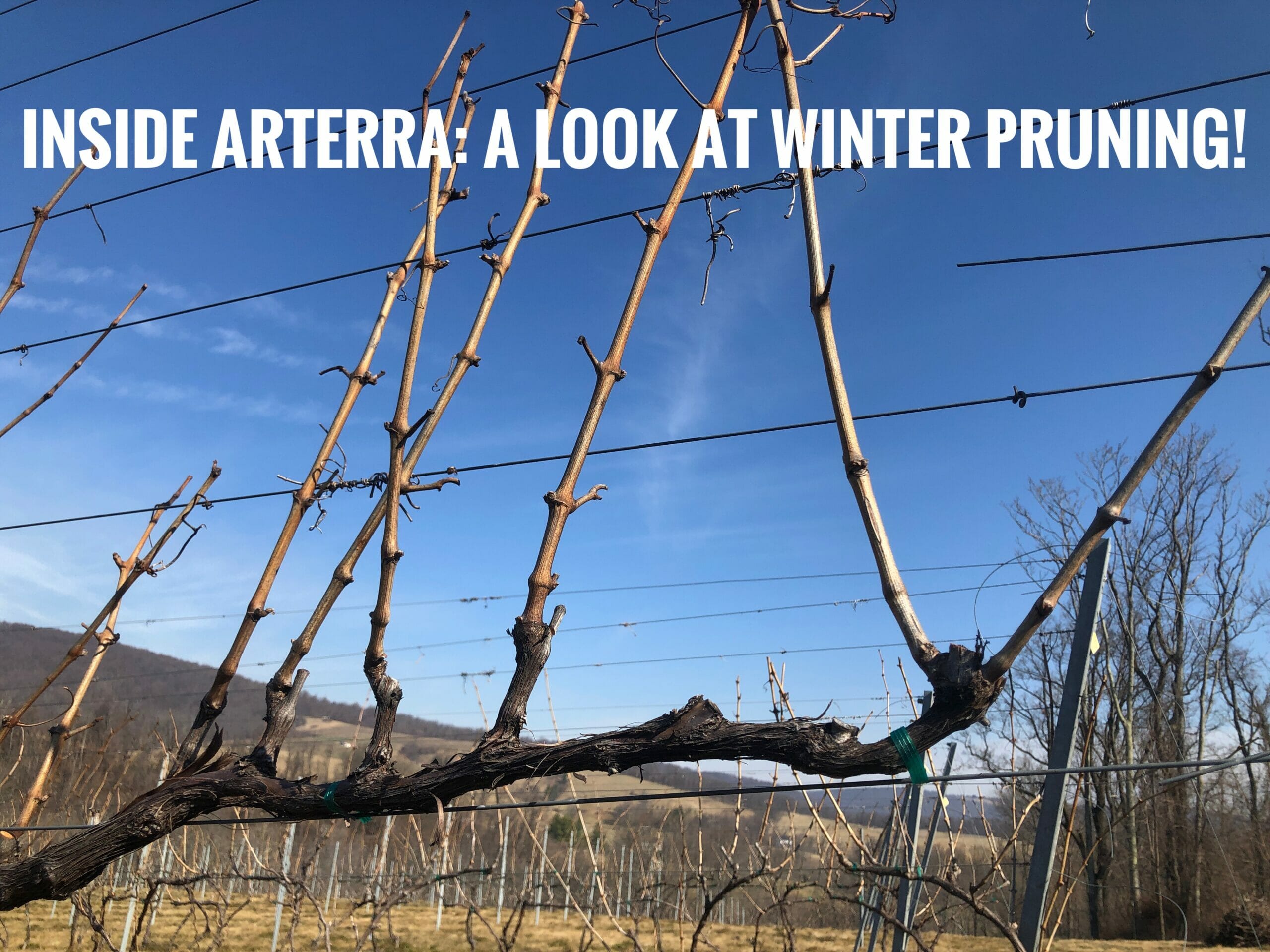Winter Grape Vine Pruning at Arterra
Many believe the growing season ceases in the winter months. In fact, there is a lot that happens during the winter to optimize the growing season, including grape vine pruning. Winter is the time of year when the grape vines require pruning to define vineyard and vine infrastructure. There are many different styles and approaches to pruning depending on your desired outcome. At Arterra we prioritize high quality fruit production over larger yields. This has to come into balance with disease control and climate volatility. These considerations have lead Jason Murray, owner and winemaker to re-assess pruning practices in favor of ideal yields and fruit quality. We are seeking consistency while mitigating implications of climate change. In this article, Jason will explain the transition his vineyard is undergoing during winter pruning. This post describes phase 1 of a 2 part transitions. As with all things wine related, changes will take time to come to full maturity.
Images of Pruning:
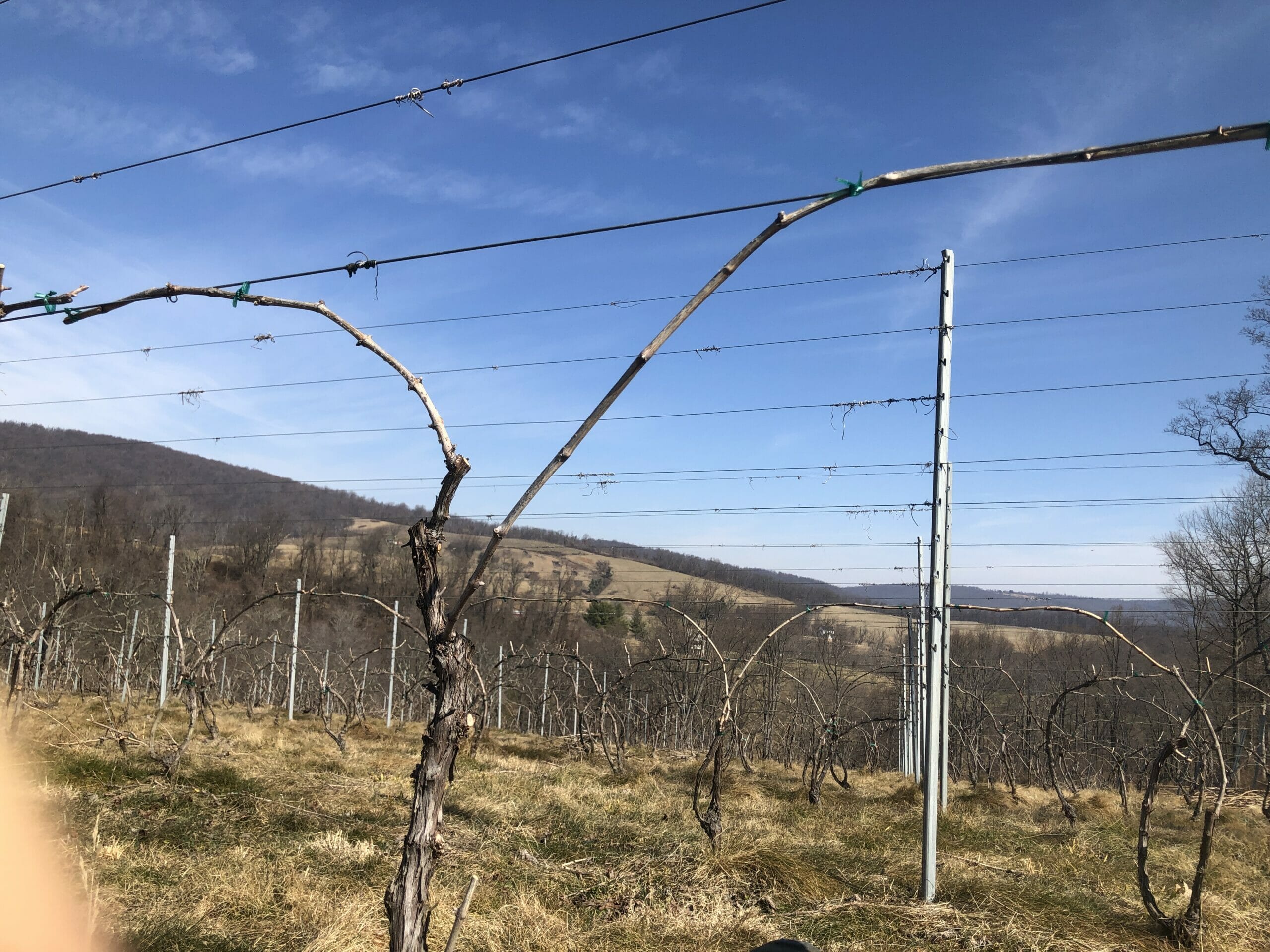
Classic Cane pruned vine, with fully renewed infrastructure, ready for spring growth.
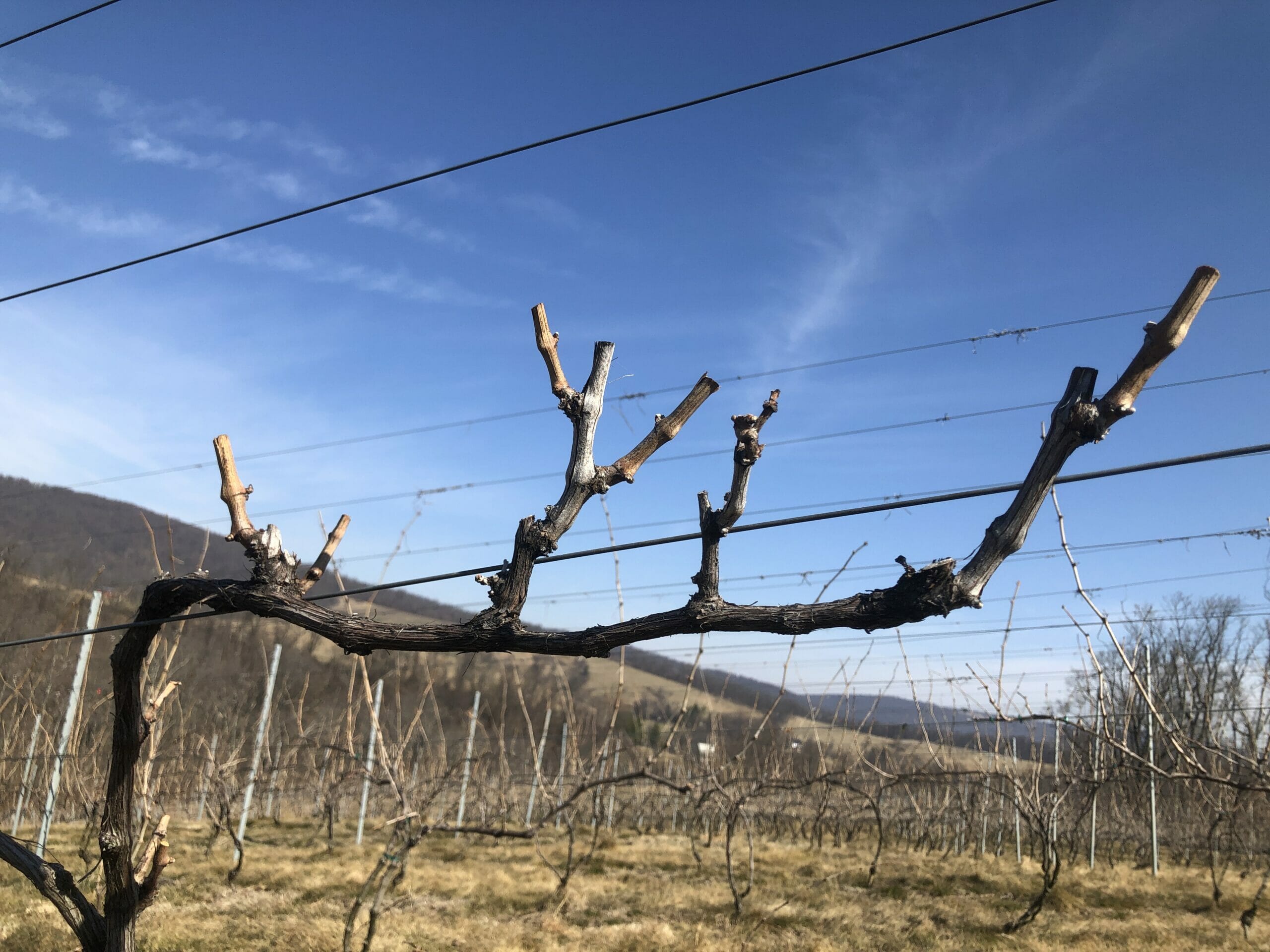
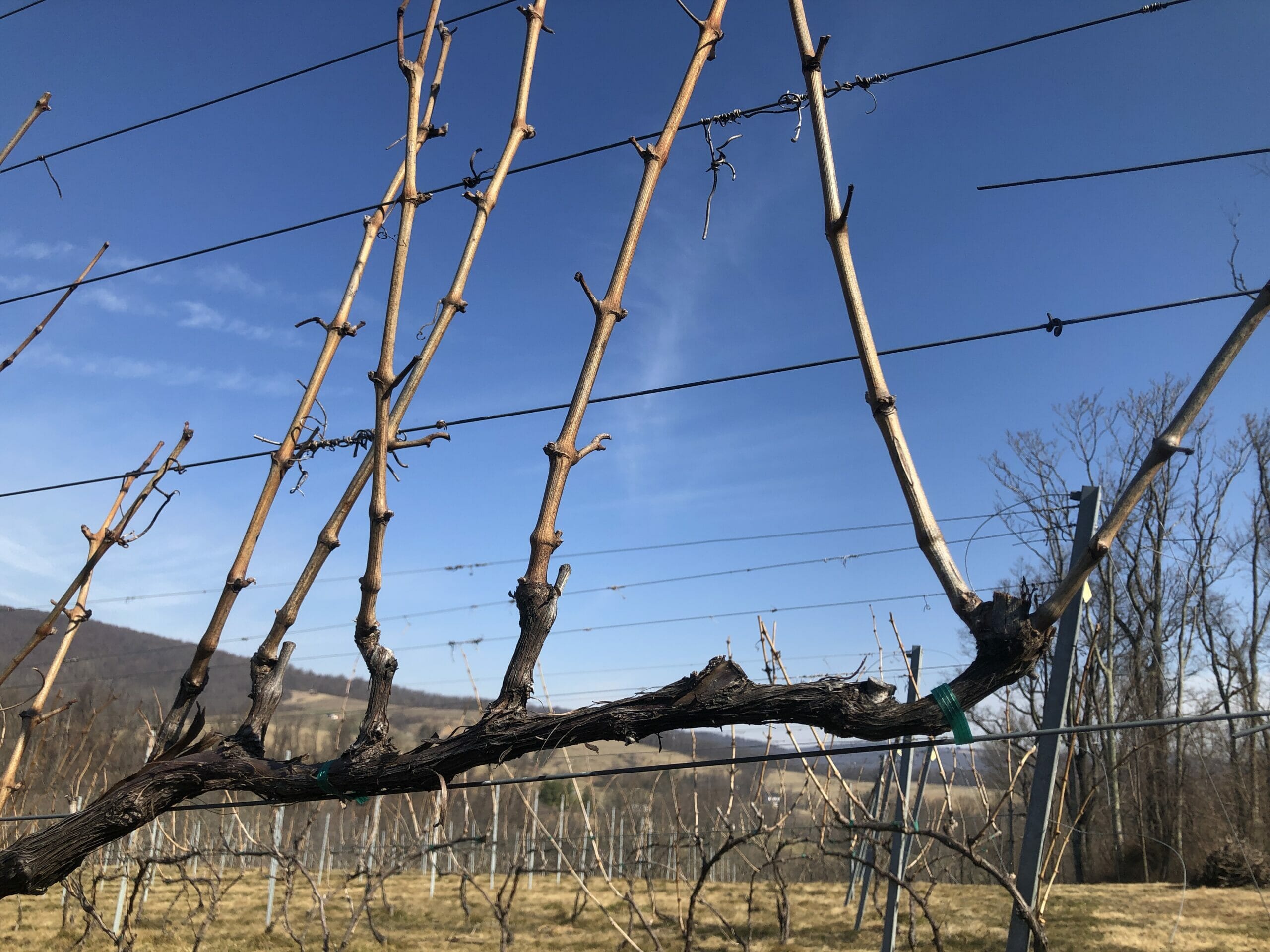
Cordon Trained & Spur pruned vine, with spurs tall until spring and a vine with spurs cut short as will happen in spring once the topmost buds on the tall shoots started growth.
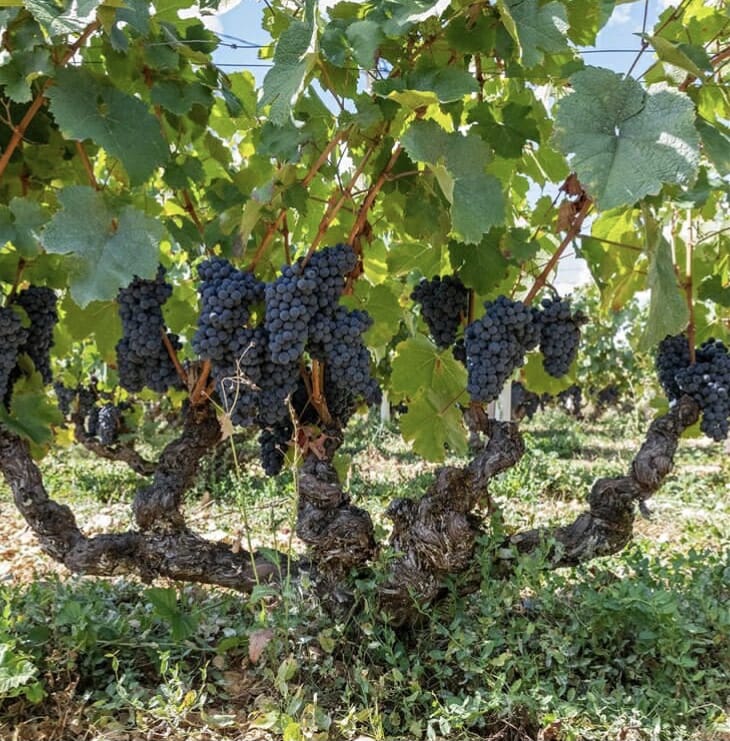
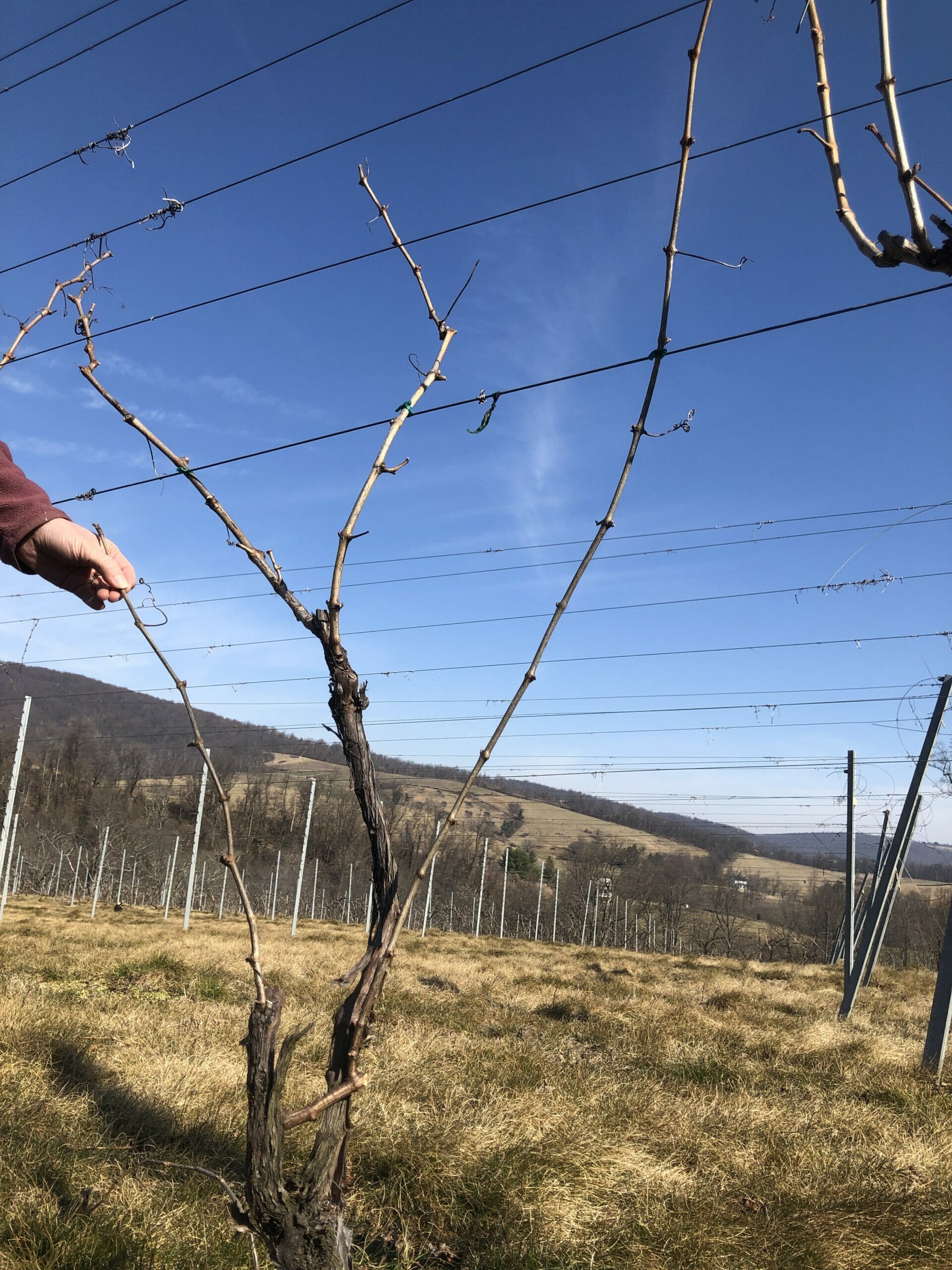
A reference image of a head trained & spur pruned vine and our first vines in transition to head trained & spur pruned. Yes they look awkward right now, but there is a bright future for them.
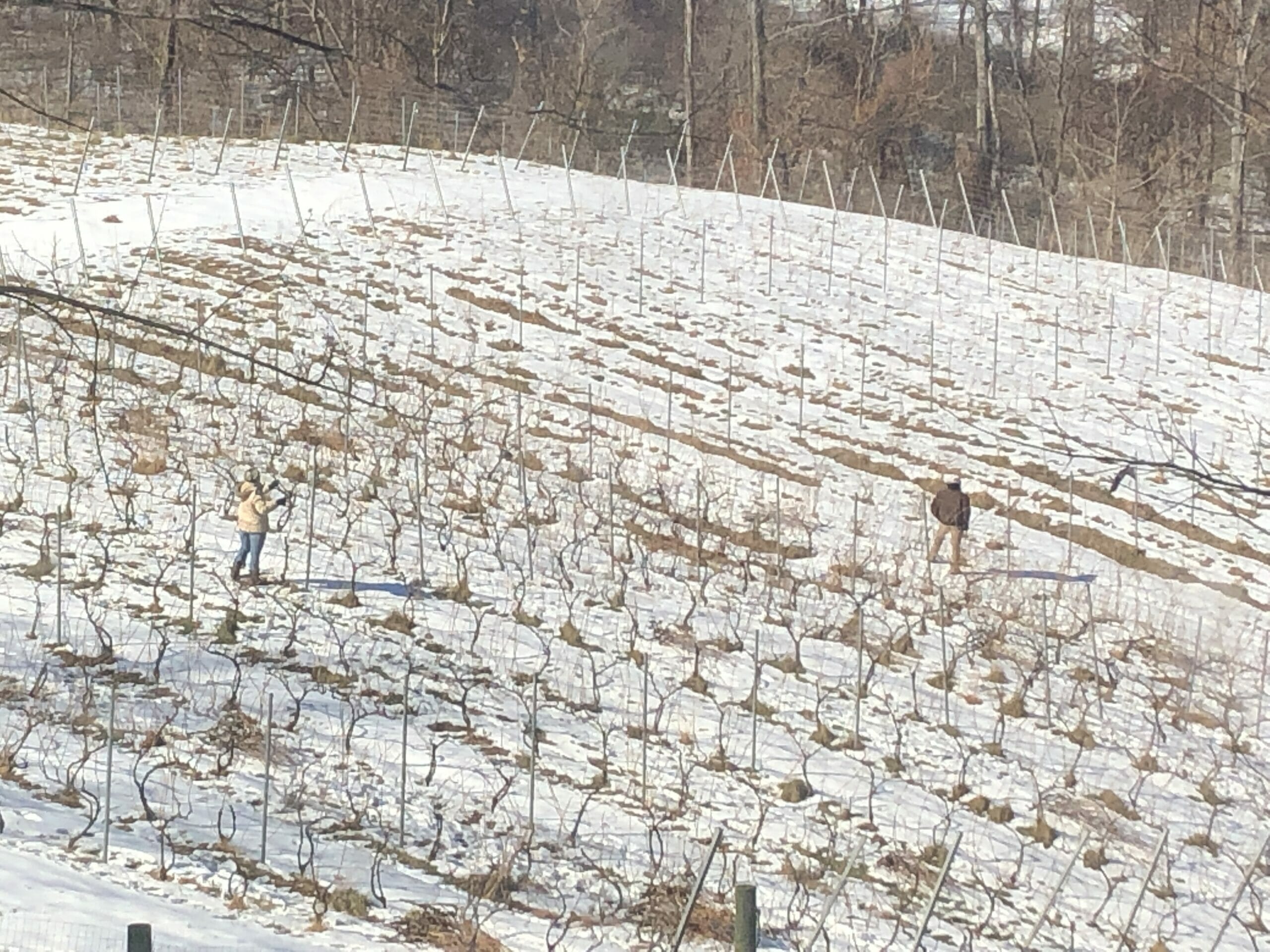
The vineyard, at mid-winter, as we are changing the pruning strategy in most of our vineyard blocks, is an ideal time to review where we are at and where we need to be going.
The changes are directly visible to those with some vineyard pruning and training experience, and is captured in these accompanying photographs. The focus: adapting to climate change.
Several aspects come into consideration.
First: Which varietals to grow where. The Seven Oaks site in central Loudoun is lower and colder in winter, and where have lost more tender varietals there to winter kill, we have already replanted Zweigelt and Blaufränkisch, and this spring planting Gruner Veltliner, all of which are more cold hardy Austrian varietals. We are holding strong there with Chardonnay, Cab Franc, and Petit Verdot.
Whereas the mountainside Arterra Estate Vineyard is at just the right elevation to optimize a thermal inversion, where cold air settles below our site, and yet we are not high enough to get the mountaintop cold either. This warm band on the mountainside allows us to grow the Tannat, Roussanne, and Petite Sirah.
Second: Knowing that we have two issues of concern when it comes to all those aforementioned Vinifera (european) varietals, we are exploring options that can make excellent wine and are more tolerant of this climate. American and Hybrid varietals are both far more winter hardy, and have a more diverse genetic profile that results in significantly better disease resistance. We have a partner site in the Plains with Mike and Oya Macey, where in 2020 we picked the first small crop of Norton, and it is showing great potential for consistency and quality. We will spend then next decade exploring not just french-americas hybrids, but a whole new wave of material coming from Europe where they are breeding domesticated Vinifera vines with wild type vinifera vines, and starting to offer some great options to plant.
What & Why? Winter survival is getting difficult, with a warmer baseline during winter, that doesn’t get the vines prepared for significantly low temperatures. Which is then followed by these dramatic one-night extreme dips in temperature, that many vines cannot handle. Disease pressure seems to be increasing partly because clonal propagation has led to stagnant genetic profile of vines, while the diseases have been successfully evolving and gaining the upper hand. This is exacerbated by a trend towards warmer wetter nights, when the pathogens grow vigorously. The new breeding programs are solving both these issues.
Third: what to do with the vines that we love and want to try to preserve amidst these challenges. We of course a better site, but even that isn’t fully reliable. So we turn to management strategies. In simplest terms, instead of cutting the vines way back during mid-winter pruning, we make our selections of what we retain while letting those remaining canes stay long/tall. The idea is that a vine wants to grow from the top to club up a tree and get more sunlights. By letting the vine attempt to grow from the top as spring starts, it suppresses growth at the bottom, and retains better hardiness in those lower buds. So we do a final cut just as the top-most buds are opening up in spring.
Industry Lingo: If you are familiar with vineyard production terminology, we are changing the pruning and training system. We had always done cane pruning, but it has started to have issues with winter bud damage, and spring frost damage. So we switched to spur pruning, which traditionally keep a horizontal extension of the trunk (called a cordon) with the spurs (growing points) along it, leaving those spurs very tall in mid-winter, and cutting them back as growth starts in spring. But the cordons have coarse bark that can harbor spring disease inoculum, and also are known for increasing the prevalence of chronic vascular pathogens in the vine. So we are in slow but steady transition to reducing the amount of old wood in favor of more young wood, which we are accomplishing by a shift to “head trained & spur pruned”. Which means multiple short trunks per vine, with the spurs right at the top of each trunk. You may have seen Spanish or old California vines grown in a “goblet” that looks kind of like a spider; we are simply using that apporach in a liner form with our trellissing.
Its all a work in progress, but the world is also a work in progress…Continue Reading Winter Pruning Phase 2 for an up to date look at our pruning transition.


